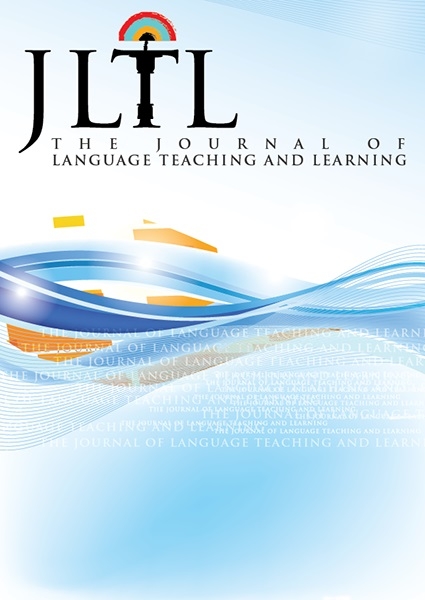Abstract
This study explored peer interactions in mixed-age English as a foreign language (EFL) secondary school classrooms in Germany which are simultaneously mixed-ability classrooms. Mixed-age classrooms are increasingly used (Thurn, 2011), but research in language classrooms is lacking. Studies on peer-interactions within M-A groups/pairs in L2 contexts are not available. Research in mainstream mixed-age classrooms suggests benefits for both younger and elder learners (Veenman, 1995; Little, 2001, 2007; Kuhl et al. 2013). Twelve mixed-age pairs of young adolescent learners were audio-recorded when interacting on regular classroom tasks, which were a part of one unit of work, lasting a period of two and half months. After the unit of work, individual interviews were conducted in order to elicit learners’ perceptions of their interactions. Applying Storch’s (2002) framework, the study examined patterns of interaction the pairs establish. This is important as Storch (2002) has shown that only some patterns of interaction may be indicative of learning. Findings show that mixed-age pairs formed predominantly patterns of interaction, which are conducive to learning, namely expert/novice and collaborative pattern (Storch, 2002). However, there was some difficulty to apply Storch’s framework to interactions of young adolescent learners. This difficulty seemed to be attributable to a certain level of ambiguity of the definitions of mutuality and equality, and the associated traits that determine them. The study also explored learning opportunities afforded by mixed-age peer interactions, operationalized in this study as language related episodes (LREs). The findings suggest that non-collaborative attitudes and patterns of behaviour may not necessarily imply limited opportunities for learning.
Upon acceptance for publication in The Journal of Language Teaching and Learning (JLTL), authors agree to the following copyright and licensing terms, which are established in accordance with international publishing ethics, copyright law, and the best practices set forth by the Committee on Publication Ethics (COPE).
1. Copyright Ownership
Authors retain the copyright of their work. By submitting and subsequently publishing in JLTL, authors agree to grant JLTL and its publisher—the Association of Applied Linguistics—a non-exclusive, worldwide, royalty-free, perpetual license to publish, reproduce, distribute, display, and archive the article in any format or medium. This license also permits JLTL to translate, adapt, or index the work as necessary for scholarly visibility and access.
This arrangement ensures the widest possible dissemination and accessibility of your work while maintaining your authorship rights. The journal does not require a transfer of copyright, as it fully supports author rights in accordance with open-access ethics and international publishing norms.
2. Licensing and Open Access
All articles published in JLTL are freely accessible under the terms of the Creative Commons Attribution 4.0 International License (CC BY 4.0). Under this license, authors permit anyone to share (copy and redistribute the material in any medium or format) and adapt (remix, transform, and build upon the material) for any purpose, even commercially, provided proper attribution is given to the original authors and source, and any modifications are clearly indicated.
Attribution must include the article title, author name(s), citation details, and a link to the original publication and license. Users must not imply endorsement by the author(s) or the journal unless explicitly stated.
3. Author Responsibilities and Ethical Compliance
By submitting to JLTL, authors confirm that:
-
The manuscript is original and has not been published elsewhere nor is it under consideration elsewhere.
-
The manuscript does not infringe upon the copyright, privacy rights, or intellectual property rights of any third party.
-
All co-authors have agreed to the submission and publication of the work.
-
Appropriate permissions have been obtained for any third-party content, including images, figures, tables, or data not created by the authors.
-
The manuscript adheres to all ethical principles of academic publishing, including proper citation of sources, avoidance of plagiarism, and disclosure of potential competing interests.
All submitted manuscripts are checked for originality using plagiarism detection software. Any breach of publication ethics may result in rejection or retraction.
4. Reuse and Sharing of Published Work
As copyright holders, authors are encouraged to:
-
Share their article via institutional repositories, personal websites, academic networks (e.g., ResearchGate, Academia.edu), or conference presentations.
-
Use the published version in educational, research, or policy contexts, provided that full citation and a link to the official version of record in JLTL are included.
We encourage authors to actively promote their work for greater reach, impact, and scholarly engagement, aligning with open science practices.
5. Third-Party Use and Repository Deposit
Anyone is free to use, distribute, or reproduce JLTL content under the CC BY 4.0 license. However, users must not alter or misrepresent the content or authorship. Proper attribution and a link to the original article must always accompany reuse. Authors are also permitted and encouraged to deposit their articles in subject-specific or institutional repositories without embargo.
6. Archiving and Long-Term Access
All published content is digitally archived by JLTL and its partners to ensure long-term accessibility and preservation. The journal is committed to ensuring the permanent scholarly record is maintained, in line with COPE and DOAJ (Directory of Open Access Journals) standards.
7. AI and Copyrighted Content
Authors must disclose any use of generative AI tools (e.g., for text generation, data analysis, translation, etc.) in the creation of the manuscript. Such use must be responsible, appropriately documented, and must not infringe on copyright or ethical publication norms. Responsibility for the content of the article lies solely with the human author(s), and no AI tools or software can be listed as an author.
8. Violation of Copyright
JLTL takes copyright and ethical integrity seriously. If any violation or misuse of copyrighted content is discovered after publication, the editorial board reserves the right to retract or remove the article and inform relevant institutions or indexing services, in accordance with COPE’s retraction guidelines.
Contact Us:
For any queries related to copyright, licensing, or permissions, please contact the editorial team at: info@jltl.com.tr

